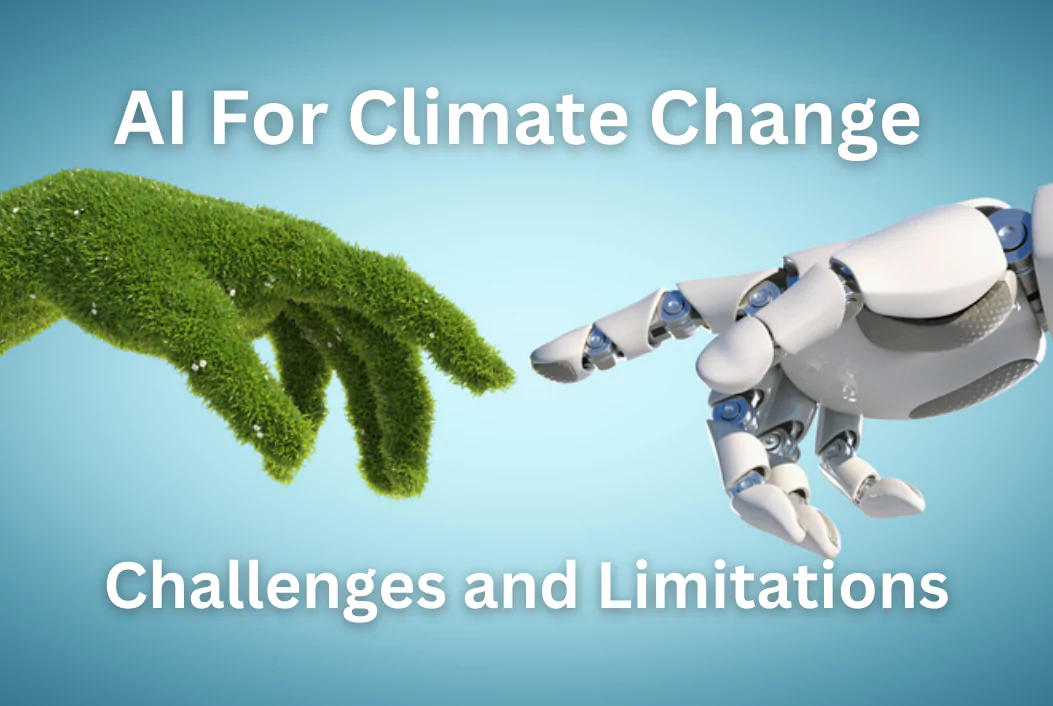Introduction to AI for Climate Change
Climate change is one of the most pressing issues of our time, with far-reaching consequences for the planet and its inhabitants. Understanding the impact of climate change is crucial in developing effective solutions to combat its effects. Moreover, the introduction of artificial intelligence (AI) has opened up new possibilities in addressing this global challenge. The potential of AI in climate change mitigation lies in its ability to process vast amounts of data and provide valuable insights to guide sustainable decision-making.
Climate Modeling:
Accurate climate modeling is crucial for understanding climate dynamics and predicting future trends. AI is revolutionizing climate modeling by enhancing the accuracy and speed of predictions. State-of-the-art deep learning algorithms, such as neural networks, are being deployed to analyze vast amounts of climate data and simulate complex climate systems with higher precision. These AI-powered models enable researchers to assess the impacts of climate change on regional and global scales, aiding policymakers in formulating effective mitigation and adaptation strategies.
Renewable Energy Optimization:
Transitioning to renewable energy sources is a cornerstone of sustainable development. AI technologies are optimizing the integration and management of renewable energy systems, such as solar and wind power. Machine learning algorithms are employed to forecast energy demand, optimize power generation, and enhance grid stability. Advanced AI-driven algorithms enable real-time adjustments in energy production and distribution, maximizing the efficiency and reliability of renewable energy infrastructure while minimizing environmental impacts.
Carbon Capture and Sequestration:
Carbon capture and sequestration (CCS) technologies play a crucial role in reducing greenhouse gas emissions from industrial processes and power generation. AI-powered systems are enhancing the efficiency and cost-effectiveness of CCS techniques. Machine learning algorithms are utilized to optimize the design and operation of CCS facilities, improve carbon capture efficiency, and identify suitable geological storage sites. By leveraging AI-driven approaches, researchers are accelerating the development and deployment of scalable CCS solutions to mitigate carbon emissions and combat climate change.
Monitoring Deforestation and Wildlife Conservation:
Deforestation and habitat loss pose significant threats to biodiversity and exacerbate climate change. AI-based monitoring systems are revolutionizing efforts to combat deforestation and protect wildlife habitats. Satellite imagery analysis coupled with machine learning algorithms enables real-time monitoring of forest cover changes, illegal logging activities, and wildlife movements. AI algorithms can detect deforestation patterns, identify endangered species habitats, and facilitate targeted conservation interventions. These AI-powered solutions empower conservationists and policymakers to effectively monitor and safeguard ecosystems, thereby preserving biodiversity and mitigating the impacts of climate change.
Applications of AI in Climate Change
-
Monitoring and predicting climate patterns: AI technologies can analyze complex climate data to predict future trends and anticipate environmental changes.
-
Optimizing energy consumption and efficiency: AI algorithms can optimize energy usage in buildings, transportation, and industries to reduce carbon emissions.
-
Enhancing sustainability in various industries: From agriculture to manufacturing, AI solutions can help industries implement environmentally friendly practices and decrease their ecological footprint.
Challenges and Limitations of AI in Climate Change

-
Data availability and quality: The effectiveness of AI models depends on the availability and quality of data, which can be a challenge in remote or underdeveloped regions.
-
Ethical considerations and bias in AI algorithms: Ensuring the ethical use of AI in climate change initiatives is crucial to prevent unintended consequences or biases in decision-making processes.
-
Integration of AI solutions with existing systems: Integrating AI technologies with existing infrastructure and systems can be complex and require careful planning to achieve optimal results.
Success Stories of AI in Climate Change
-
Carbon footprint reduction through AI-powered initiatives: Companies leveraging AI technology have successfully reduced their carbon emissions and implemented more sustainable practices.
-
Improved disaster response and risk management: AI systems can analyze real-time data during natural disasters and assist in emergency response efforts to minimize damages and save lives.
-
Advancements in renewable energy with AI technology: AI is driving innovations in renewable energy sources like solar and wind power, making them more efficient and cost-effective.
Future Prospects and Recommendations

-
Scaling up AI solutions for global impact: Collaboration between governments, industries, and AI experts is essential to scale up AI solutions and address climate change on a global scale.
-
Collaborations between governments, industries, and AI experts: Collaborations between various stakeholders can accelerate the development and implementation of AI-driven climate change solutions.
-
Investing in research and development for sustainable AI solutions: Investing in research and development for sustainable AI solutions is crucial for long-term success in mitigating climate change.
Conclusion
The integration of AI technologies holds immense potential to address the multifaceted challenges of climate change. From enhancing climate modeling accuracy to optimizing renewable energy deployment, and from advancing carbon capture technologies to monitoring deforestation and wildlife conservation efforts, AI is driving innovation across various domains of climate action. As the climate crisis intensifies, harnessing the power of AI presents a transformative opportunity to achieve sustainable development goals and safeguard the planet for future generations.
By leveraging the latest advancements in AI, stakeholders can collaborate to develop scalable solutions that mitigate climate change impacts, promote environmental resilience, and foster a more sustainable future for all.
FAQs:
-
Q1: How can individuals contribute to AI initiatives for climate change mitigation?
Ans: Individuals can contribute by supporting AI research, providing data, advocating for AI in climate action, adopting sustainable lifestyles, and promoting eco-friendly habits.
-
Q2: What are some examples of AI-powered solutions making a real impact on climate change?
Ans: AI-powered solutions include improved climate prediction models, optimization of smart grids for renewable energy, precision agriculture techniques, and forest monitoring for conservation.
-
Q3: How can governments and industries work together to promote the use of AI for sustainable development?


